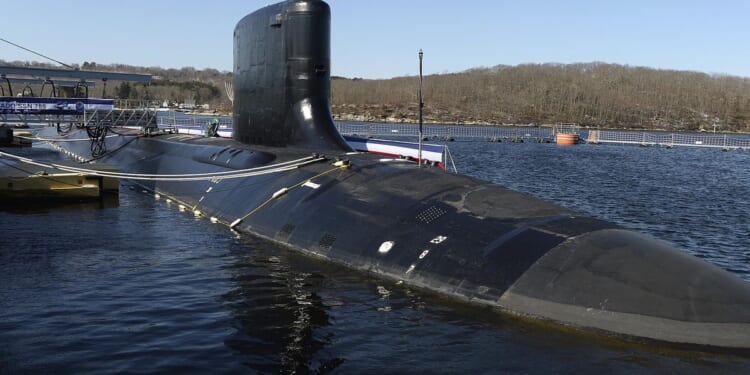
The Navy’s decision to ask Congress for only a single Virginia-class fast-attack submarine in its fiscal year 2025 budget request wasn’t some “inside the Beltway” maneuver to trick Congress into securing enough funds to pay for a second sub, the service’s comptroller said Wednesday.
Assistant Navy Secretary Russell Rumbaugh said it was a “real decision” that can be confirmed by the service’s unfunded priority list. Asking for one rather than two Virginia-class submarines is “recognizing a fundamental reality” on the part of the Navy and the Defense Department, he said.
“This is not trying to play a game at the budget level,” he said at an event hosted by the American Enterprise Institute think-tank.
The Navy has bought two Virginia-class cruise missile-carrying submarines every year since 2011— even during years when the service did not request one, Mr. Rumbaugh said.
The service has 16 of the submarines appropriated, with 14 currently under contract. But construction yards in the U.S. have “tens of billions of dollars” worth of backlogged orders.
The delay could increase as the Navy moves into full production on the Columbia-class submarines and continues to help Australia expand its undersea fleet as part of the AUKUS agreement between Australia, the United Kingdom, and the U.S., Mr. Rumbaugh said.
“There is just a fundamental tension and difficulty there that we, with our industrial partners [and] with our partners in Congress, need to work through,” he said.
The temporary pause is intended to help shipyards work down some of their backlog in production, Mr. Rumbaugh said.
The Navy’s decision to cut in half its Virginia-class submarine request is getting some pushback from Congress. Last month, Democratic Rep. Joe Courtney, whose district in Connecticut includes General Dynamics Electric Boat, which has been the primary builder of U.S. Navy submarines for more than 100 years, questioned the move.
“The Navy’s plan to cut a submarine that has already been partially paid for and built makes little or no sense,” Mr. Courtney said in a statement last month. “If such a cut is actually enacted, it will remove one more attack submarine from a fleet that is already 17 submarines below the Navy’s long-stated requirement of 66.”
Navy officials confirmed this week that their biggest shipbuilding projects—including Virginia-class submarines, frigates, and an aircraft carrier—are now years behind schedule. Shipyards face some of the same staffing challenges that the military services deal with, along with challenges to their supply chains, Mr. Rumbaugh said.
Securing a top-of-the-line Virginia class submarine for Australia’s navy doesn’t necessarily mean the U.S. is losing out, Mr. Rumbaugh said.
“This is a great strategic moment. Let’s get our allies and partners the best thing there is out there,” he said. “Virginia-class subs run laps around everything else in the water.”
Columbia-class submarines will eventually replace the Ohio-class ballistic missile subs as one leg of the country’s nuclear triad. Mr. Rumbaugh said the program is the crown jewel for the Navy, a program that it can’t do without.
“Whatever delay it is suffering is not coming from a funding problem,” he said. “Everybody, including Congress, knows how important Columbia was.”
The Navy’s fiscal year 2025 budget request is $257.6 billion, an increase of $1.8 billion from the previous year. It was the result of actual strategic choices made in the White House and the Pentagon, Mr. Rumbaugh said.
“We are a maritime power and we know the pacing challenge is China,” he said. “What we need more of are nuclear-deterrent submarines, fast-attack submarines, destroyers that are sailing in the Red Sea, and a Marine Corps that can respond to a crisis like Gaza and be there immediately.”












